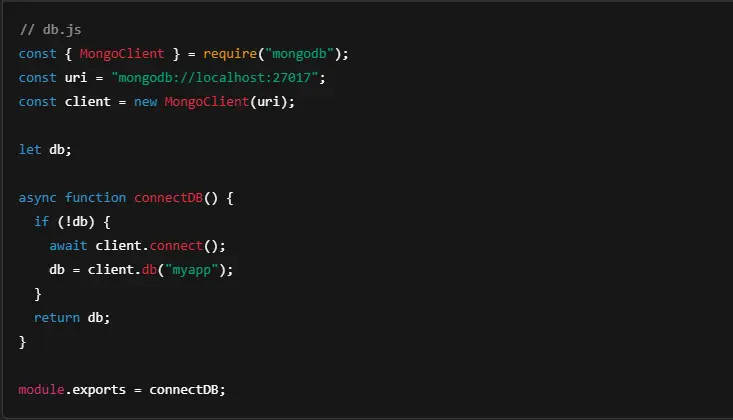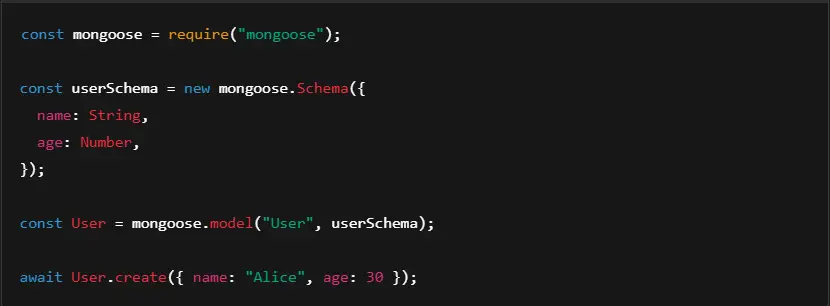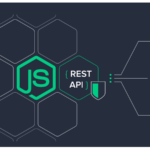Getting Started with MongoDB Node.js
Learn how to quickly set up and connect MongoDB with Node.js to build efficient and scalable web applications.
MongoDB Node.js integration provides developers with a powerful and flexible way to build modern, scalable web applications. By combining the non-relational power of MongoDB with the asynchronous capabilities of Node.js, you can create high-performance backends with ease.
To get started with MongoDB Node.js, you first need to set up your development environment. Begin by installing Node.js from the official website if it’s not already installed.
Why Choose MongoDB Node.js for Web Development?
Using MongoDB Node.js in your projects enables fast data access, real-time processing, and seamless JSON handling. This duo is particularly popular for building RESTful APIs, single-page applications (SPAs), and data-driven web services.
JSON Everywhere: MongoDB stores data in BSON (a JSON-like format), and Node.js works seamlessly with JSON. This reduces the need for data transformation and simplifies backend development.
Asynchronous and Non-blocking I/O: Node.js handles multiple requests concurrently without blocking the thread. When paired with MongoDB’s asynchronous operations, this results in faster and more efficient applications.
High Performance at Scale: MongoDB’s document-based model is ideal for handling large amounts of unstructured or semi-structured data. Combined with Node.js, it can support high-throughput applications.
Easy Integration: The official MongoDB Node.js driver makes it easy to connect and interact with your database. Plus, popular frameworks like Express.js enhance the development experience.
Active Ecosystem: Both MongoDB and Node.js have large developer communities and strong documentation, which means better support and faster troubleshooting.
MongoDB Node.js: 10 Essential Tips for an Easy Start
Integrating MongoDB Node.js is a powerful combination for building high-performance, scalable applications. MongoDB’s document-oriented NoSQL structure pairs naturally with Node.js’s asynchronous nature, making it a popular tech stack for developers worldwide.
In this guide, you’ll explore 10 essential tips for effectively using MongoDB with Node.js. Whether you’re building RESTful APIs, real-time apps, or backend services, these tips will get you started on the right track.
1. Understanding MongoDB and Node.js Basics
- MongoDB is a NoSQL database that stores data in flexible, JSON-like documents. Node.js is a runtime environment that allows JavaScript to run on the server. Together, they form a non-blocking, full-stack JavaScript environment.
Why Use MongoDB with Node.js?
JavaScript across front and back end
Asynchronous and non-blocking operations
Perfect for RESTful APIs and microservices
Scalable architecture for high-load systems
2. Setting Up MongoDB and Node.js
- First, install Node.js and MongoDB locally or via cloud platforms like MongoDB Atlas.
Use MongoDB Atlas for a cloud-hosted solution
3. Using the Official MongoDB Node.js Driver
- The official MongoDB driver is the most direct and lightweight way to interact with MongoDB.
Use async/await for clean asynchronous control flow
4. Structuring Your Database Connections
- A good practice is to isolate your MongoDB connection logic in a separate module.
.
5. Handling CRUD Operations Efficiently
- Create
This line inserts a single document into a MongoDB collection using the Node.js MongoDB driver.
await:
This keyword tells JavaScript to wait for the asynchronous operation to complete before moving on. It can only be used inside anasyncfunction.collection:
This is a reference to a specific MongoDB collection object that you’ve previously defined, usually like this:insertOne():
This method inserts a single document (object) into the collection.{ name: "Bob", age: 25 }:
This is the document being inserted. It’s a simple JavaScript object with two fields:"name"with the value"Bob""age"with the value25
- Read
This line retrieves all documents from a MongoDB collection and stores them in the users variable as an array.
const users =
This declares a constant variable calledusersto store the result.await
Waits for the asynchronous operation to finish. This must be inside anasyncfunction.collection.find({})collectionis your MongoDB collection object (e.g.,userscollection)..find({})is a method that queries the collection.The
{}means no filter — it fetches all documents from the collection.
.toArray()
This converts the query result (a MongoDB cursor) into a JavaScript array of documents, which makes it easier to work with.
- Update
This line updates a single document in the collection — specifically, it finds a document where name is "Bob" and sets the age to 26.
await
Waits for the asynchronous update operation to complete. Must be inside anasyncfunction.collection.updateOne()
This method updates the first document that matches the filter criteria.{ name: "Bob" }
This is the filter — it looks for a document where thenamefield equals"Bob".{ $set: { age: 26 } }
This is the update instruction.$setis a MongoDB update operator that sets the value of a specified field.In this case, it sets
ageto26.
- Delete
This line deletes a single document from the MongoDB collection where the name field equals "Bob".
await
Tells the program to wait for thedeleteOne()operation to complete before continuing. Must be inside anasyncfunction.collection.deleteOne()
This method deletes the first document that matches the given filter.{ name: "Bob" }
This is the filter criteria. It looks for a document with anamefield equal to"Bob".
6. Using Mongoose for Schema Modeling
Mongoose adds structure and validation to MongoDB documents.
7. Implementing Indexing and Performance Optimization
Indexes improve query performance:
Use the explain() method to analyze query performance:
Avoid unnecessary reads and writes by structuring data thoughtfully.
8. Error Handling and Logging
Always handle connection and operation errors.
Integrate logging with winston or pino for production-grade logging.
9. Securing MongoDB in Node.js Applications
Never hardcode credentials. Use environment variables.
Always enable authentication and role-based access in MongoDB.
Sanitize inputs to avoid injection.
Use TLS/SSL for encrypted connections.
10. Testing and Debugging MongoDB Node.js Code
Use Jest, Mocha, or Supertest for writing unit and integration tests.
Debug MongoDB queries using .explain() or logging each step.
11. 10 Real-World Examples
User Registration System – Store user profiles on signup.
Todo App Backend – CRUD operations on tasks.
Blog Platform – Posts and comments with nested documents.
E-Commerce – Products, orders, and user carts in collections.
Chat App – Store messages and chat history.
Analytics Service – Insert and aggregate logs in real-time.
Authentication System – Session tokens stored in MongoDB.
Job Board – Listings and user applications.
IoT Device Logger – Store sensor data streams.
Inventory Management – Stock levels and supply chain tracking.
FAQs About MongoDB Node.js
1. What is MongoDB Node.js?
- MongoDB Node.js refers to using MongoDB as the database and Node.js as the backend server environment. Together, they allow building fast and scalable web apps using JavaScript.
2. Is Mongoose required to use MongoDB with Node.js?
- No, Mongoose is optional. You can use the native MongoDB driver, but Mongoose helps with schemas, validation, and models.
3. How do I connect to MongoDB Atlas from Node.js?
- Use your MongoDB Atlas connection string with the
MongoClientclass from the MongoDB driver.
4. Can I use MongoDB with Express.js?
- Absolutely! MongoDB is often paired with Express.js in the MERN (MongoDB, Express, React, Node.js) stack.
5. How do I handle MongoDB errors in Node.js?
- Use
try/catchfor asynchronous code and check for specific error codes in operations.




















Pingback: Top 10 Essential NodeJS Features for Modern Web Development - we provide something different